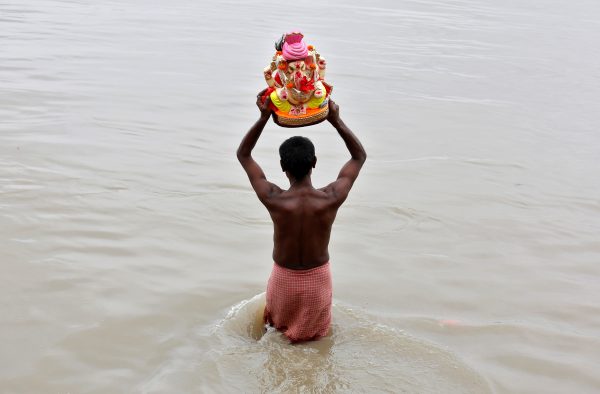Buses were up in flames, trucks stopped and ransacked on the highways and cars torched.
Tamil Nadu’s Chief Minister, the unshakable Jayaraman Jayalalitha, sought protection for Tamil-speaking subjects living in Karnataka as news spread of attacks on commercial establishments, such as hotels serving Tamil food and shops owned by Tamils. The central government rushed in anti-riot paramilitary forces to deal with the unprecedented situation. Curfews were issued in various places across Karnataka and Tamil Nadu.
The flare-up was a reaction to the decision of India’s highest judiciary body, the Supreme Court, to release a reduced amount of water from the Cauvery River to Tamil Nadu. The Cauvery River flows through both Karnataka and Tamil Nadu, and the two riparian states have been at each other’s throat for quite some time.
But tensions tipped over during this monsoon in response to the modification of the Court’s earlier order that allowed the release of a larger amount of water to Karnataka. The modification was in response to the request of a senior advocate and Karnataka counsel, Fali Nariman, who argued that drinking water was diminishing and that farmers were suffering immensely.
In India water is a multidimensional resource upon which cultural and religious beliefs find expression. It represents a critical input for individual livelihoods and economies and assumes a place of geopolitical importance. Beyond its obvious value, water in India is pluralistic and represents both a matrix of culture and a medium through which social and political relations are practised and structured. Yet the Indian state sees water only as a physical resource — quantifiable and planned.
So who owns (or rules) water in India? As the esteemed former secretary of water resources, the late Professor Ramaswamy Iyer, pointed out, water is included in both state and union lists, yet remains absent among fundamental rights in the Indian Constitution. Despite efforts from civil society activists, water remains a purely economic issue — its social-cultural values are largely ignored. Yet as every Indian knows, water is delineated in India by markers of political, social and cultural difference.
Radha D’Souza of the University of Westminster — in her book on disputes over the waters of Krishna River — argues that the roots of the majority of these disputes date back to the establishment of colonial institutions that gave primacy to a certain view of water and embedded that view in law and justified it in scientific and modernistic terms. When an authority that is located far away from the communities that actually use the water carries out the arbitration it becomes difficult to prioritise competing claims.
The difficulties to such centralised decision-making became obvious in mid-September when tensions between politicians and residents of the Indian states of Karnataka and Tamil Nadu boiled over. In its commentary on the water dispute The Economist also blamed the changing rainfall patterns and suggested that government institutions have largely failed to address the issue.
The Supreme Court was unequivocal in exerting its authority in the matter, warning residents of both states that ‘Citizens cannot become the law unto themselves. When a court of law passes an order, it is the sacred duty of the citizens to obey the same’. But Iyer predicted that the situation will worsen unless Karnataka’s strong sense of injustice is assuaged, to some extent, by Tamil Nadu voluntarily transferring some of its water allocations back to Karnataka. Iyer also called for harmonious and constructive dialogues between the farmers of the two states.
When water is stripped of its political, social and cultural meanings, community voices are not only stifled but questions arise regarding what is actually meant by ‘valid claims’ to waters. The unprecedented urban growth of Bangalore has imposed demands on the Cauvery River that could have been foreseen by policy-makers.
Less water for the city means less water for middle-class consumers living in high-rise buildings who have a stronger voice in popular media and greater influence with arbitration bodies. Less water for downstream agricultural belts — particularly for the farmers in the Cauvery delta who don’t pay taxes and contribute little to national GDP — means a loss of livelihood for a very large number of vulnerable people and the erosion of votes for political parties. Most farmers now cultivate winter crops — often for cash incomes — that were not part of their traditional livelihoods and require intensive water supplies.
One can only watch on in amazement. The debates rage on around questions of which state has more water in its reservoirs and who needs this water more. But there is still little understanding of how water is perceived by different actors. No immediate solution is in sight. Meanwhile, Indians continue to hope for help to come from the sky.
Kuntala Lahiri-Dutt is a Senior Fellow at The Australian National University. Her books include: ‘Dancing with the River’ (Yale University Press, 2013) and ‘Water First’ (Sage 2008).

